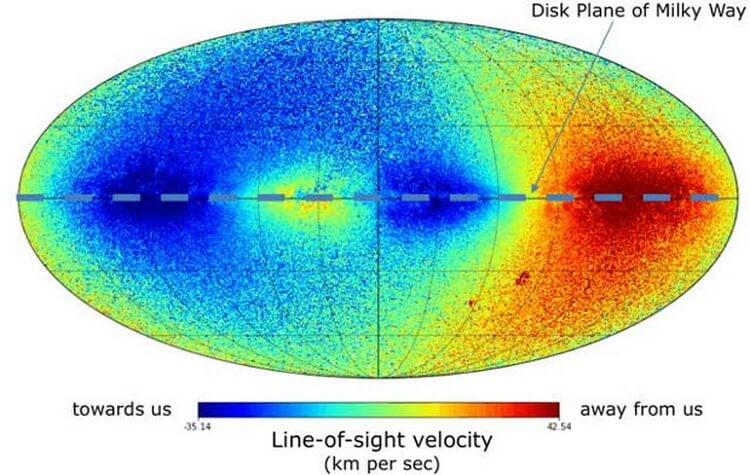
The European space Agency (ESA) has introduced a new very accurate and highly detailed map of the milky Way, which shows the exact location and brightness of almost 1.7 billion of stars. At the moment it’s the most complete star catalogue, to create which was possible thanks to the work of the space telescope Gaia.
Camera Gaia was created by ESA and launched in late 2013. The tool works in the optical range and measures of proper motion stars (displacements of stars on the celestial sphere, which due to their motion relative to the Solar system), as well as parallax – the changes of coordinates of stars, which is due to the change of position of the observer due to the rotation of the Earth around the Sun. The combination of these data allows to know the distance to stars and to understand how they are distributed in our galaxy.

360-degree panorama of the parallax of stars as it appears Gaia
In the first 14 months of observation, scientists have obtained the first set of data, which in 2016 was created, highly detailed map of our galaxy, take into account the features of more than 1.1 billion stars. The second dataset covers the observation period from July 2014 to may 2016 and already contains 1.3 billion stars. In addition, Gaia has measured the brightness and color 1.7 billion of stars and changes these characteristics for the 500 million other objects. The new directory also includes information about a temperature of about 100 million stars.

Map of radial velocities of stars. Red shows the objects receding from the Sun, and the blue approaching him
Approximately 7 millions of stars have been measured radial velocities, which allowed us to see what paths they’re moving relative to the center of the milky Way. This information is necessary in order to know the weight of our galaxy, as well as the distribution (and possibly properties) of dark matter, which, according to scientists, along with dark energy makes up 95 percent of the mass of our Universe.

The objects of study Gaia. From left to right: objects in the Solar system, nearby stars, the milky Way and his jumper, the galactic halo and globular clusters, nearby galaxies, distant quasars
The researchers noticed that the movement of the stars, which rotate about the same rate, there are some features. In the future, scientists plan to test whether they are related to disturbances, which creates the jumper in the center of the milky Way, which is a dense region of stars and interstellar gas, or it has something to do with past milky Way mergers with other smaller galaxies.
The Gaia telescope has also identified 75 orbits of globular clusters and 12 dwarf galaxies that orbit the milky Way. The work of the telescope and the resulting data allow to study the past of our galaxy and its environs. For example, the distribution of dark matter or gravitational influence of other objects. In addition, the new release contains a provision 14 099 known objects in the Solar system, the bulk of which is a asteroids.
Created the most detailed at the moment map of the milky Way
Nikolai Khizhnyak